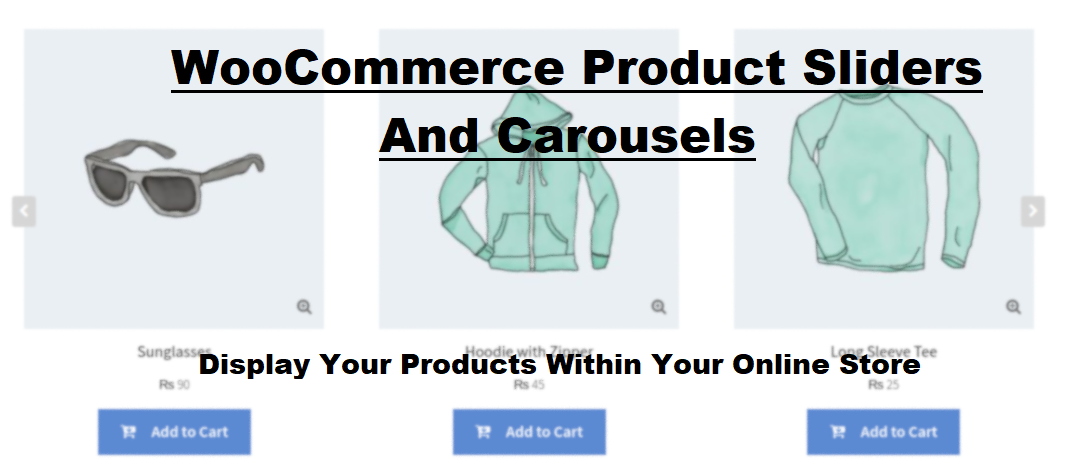How to Create Blog Posts That Introduce Your Product to Potential Customers
There’s a reason why many businesses now have a blog in addition to their website. Companies that have a blog generate 67% more leads per month than companies that do not have one.
Quick Links
But writing blog posts is more than just putting your thoughts out there. To truly reap the benefits of blogging for business and produce content that is of interest to your audience, you need a solid strategy. According to Semrush, 84% of businesses rely on a content marketing strategy.
One of the primary goals of content marketing is to create brand awareness in a subtle way through your blog posts. Because a blog is typically a TOFU channel, this isn’t the best place to make a hard sell to readers who are still in the awareness stage and just looking for some information. At this point, you’re interacting with a broad audience that has a problem and wants to learn more about it.
However, this doesn’t imply that you should never discuss your product on your blog. In some cases, introducing your product or discussing one of its unique features may be extremely beneficial. If your content marketing strategy is solely focused on lead generation or brand awareness, you may be passing up conversion opportunities.
So, how will you introduce your blog audience to your products without seeming pushy? We’ve rounded up a few key points and some useful blog examples to help you out.
1. Create a Logical Reason to Talk About Your Product
Any mention of your product simply has to appear as the most logical flow of your blog post. It will appear desperate if you place it anywhere without any logic. It will also undermine the post’s objectivity and credibility. And there’s a chance it’ll have an impact on your entire blog because the readers of that post are unlikely to return.
Take, for example, Aura’s post on Amazon Automate Pricing Alternative. They are aware that Amazon sellers reading their post are eager to learn more about using pricing tools for their stores. At the same time, they know that sellers will probably consider different options to find what kind of tool suits them best.
As a result, Aura created a logical flow in which they could mention their product while still providing readers with a wealth of useful information. They highlight the issues you will encounter with Amazon’s tool and provide a solution in the form of third-party software that can replace it.
If you’ve arrived here, you’re looking for an alternative to Amazon’s tool. This is where Aura comes in. They cleverly tell you that Aura has it all by first explaining what you should look for in third-party software. The thing is, they’re not telling you to buy it; they’re just offering it as one of the solutions and advising you on what third-party software to look for.
2. Provide the Right Amount of Detail
When you decide to create a blog post that features your brand’s flagship product, you may be tempted to show off all of the cool things it can do. However, don’t fall into the trap of overloading readers with complicated details and tutorials. The key is to focus your post on the product’s benefits and what they get out of it, demonstrating how it will make their life easier.
Remember that these people aren’t customers yet. You want to talk to them about what they can do with your product, not how. They want to see benefits, not features. If you push on them too much information they didn’t actually look for, you definitely risk alienating them.
Take, for example, Notion’s post about their new API. They’re announcing that their new API is no longer in beta. However, instead of going into detail about how the API works now, they focus on the advantages. So, what do you get out of it? How is using it going to improve your life? That is the question they’ve addressed here. There are no superfluous details – just what you need to know to be tempted to give it a shot.
3. Communicate with Visuals
According to statistics, 65% of the population is comprised of visual learners, which means they better absorb information if they can see a visual representation. This is critical for companies that make high-tech products. By utilizing visuals smartly, you can convey your message to readers more easily and make sure they understand.
For a great example, take a look at how the Optimal Workshop included some screenshots in their post on web architecture. We can all agree that the subject is complex, and they’ve covered it in great detail, using screenshots to help people understand and potentially become interested in their product. All the screenshots are clickable, and readers can view them in high resolution. They’ve really done their best using visuals to make everything super-clear for readers and haven’t left anything to chance.
4. Capitalize on Trending Topics
Writing about hot topics is a good way to attract new readers. So, consider what is happening in your industry or in general and how your product can be a solution to common current problems.
As an example, consider Gusto’s post on Agile HR, which discusses business changes during the pandemic. They address the issues that the HR sector is experiencing as a result of these changes. Next, they describe how their product assists businesses in dealing with the effects of the pandemic on their work environments. Finally, they imply that their product may be the solution.
5. Tell Customer Success Stories through Case Studies
According to HubSpot’s State of Marketing Report 2020, 13% of marketers have named case studies as one of the primary forms of media used within their content strategy.
A blog post in the form of a case study needs to be informative and beneficial to a reader with a similar problem as described in that specific case. After all, your readers are expecting something from this post, not just a case study.
As a result, your post’s title and central theme should be an issue or challenge that the client had to overcome. Then, using that specific instance, demonstrate how you resolved the issues. The central focus is not your company, product, or service, but rather the solution to a certain problem – which, of course, was the result of your company’s expertise.
Take, for example, Moz’s case study post on building links to your blog. Matthew Barby (Global Head of Growth and SEO at HubSpot) discusses a professional challenge he faced and how Moz assisted him in overcoming it. He describes the entire journey, not just the input from Moz.
Final Thoughts
As you can see, there are numerous ways to incorporate your product into a blog post in a way that your readers will genuinely appreciate. By using them, you’ll help raise awareness about your products and significantly contribute to your content marketing efforts.
What Is WooCommerce Product Slider and Why Your Store Needs It
Why Do Product Images Matter So Much in Online Stores? When someone visits an online store the…
0 Comments9 Minutes
How to Streamline Your Customers’ Shopping Experience?
The goal for any online store is to make shopping as smooth as possible. When visitors move…
0 Comments8 Minutes
Strengthening Brand-Customer Relationships Through Gamified Loyalty Programs
Creating lasting connections with customers has become increasingly vital as the marketplace grows…
0 Comments6 Minutes
How to Use SEO and SEA Together in Search Engine Marketing
In digital marketing, search engine marketing (SEM) plays a critical role in improving online…
0 Comments10 Minutes
Content Marketing Growth Hacks: Real Shortcuts to Drive Traffic
Are you still lagging in content marketing? Sticking to these old strategies seems…
0 Comments10 Minutes
How to Build a Strong Local Following Using Social Media Marketing
In the days of likes, shares, and stories, local businesses have a golden opportunity to create…
0 Comments9 Minutes
Why WooCommerce is the Best Choice for Your Online Store?
WooCommerce stands out as a top option for anyone looking to build an online store. This platform…
0 Comments8 Minutes
How to Use AI-Powered SEO Tools for WordPress eCommerce
SEO is a critical factor in the success of any e-commerce WordPress store. As competition…
0 Comments11 Minutes








